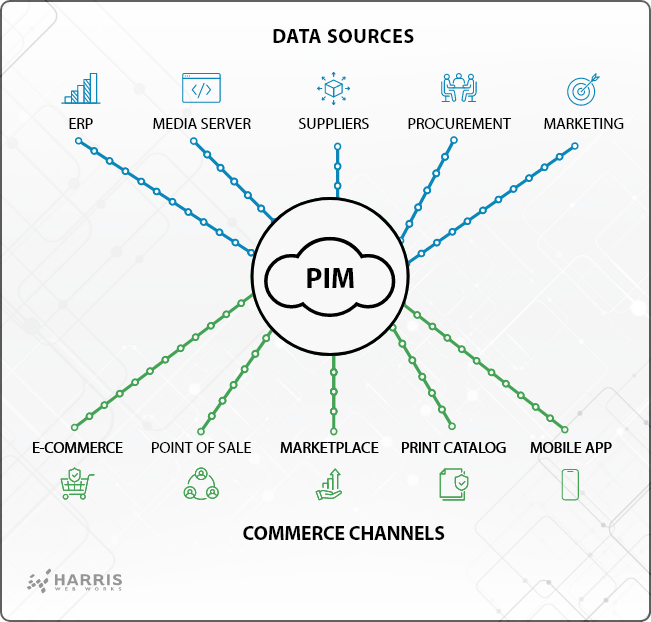An ERP (Enterprise Resource Planning) system and a PIM (Product Information Management) system serve different but complementary roles within an organization, particularly for businesses involved in manufacturing, distribution, or retail. Here’s a look at the advantages of using a PIM system in addition to an ERP system and the functions where PIM might excel compared to ERP:
Advantages of Using PIM with ERP
- Enhanced Focus on Product Information: While an ERP system excels in managing business processes like finance, HR, and supply chain, a PIM system is specifically designed to manage all aspects of product information. Using both allows for a specialized approach to different areas of the business.
- Richer Product Content Management: PIM systems can handle more complex and varied types of product data, including images, videos, and other multimedia. This goes beyond the typically text-based information stored in ERP systems and allows for a richer customer experience.
- Faster Time-to-Market: PIM systems streamline the process of collecting, enriching, translating, and publishing product information. This is especially valuable for businesses that operate across multiple channels or regions, as it can significantly reduce the time required to get new products to market.
- Improved Customer Experience: With a PIM, organizations can ensure that customers receive consistent and detailed product information across all channels. This enhances the customer’s shopping experience, leading to increased trust and potentially higher sales.
- Scalability and Flexibility: PIM systems are often more scalable and flexible in handling different types and quantities of product information. As the business grows, so too can the PIM system, without the need for significant restructuring.
- Better Cross-Department Collaboration: By centralizing all product information, a PIM system facilitates collaboration between departments like marketing, sales, and product development. This ensures that everyone has access to the same, up-to-date information.
Another benefit of cross-department collaboration is that the PIM system will help to limit access to the ERP by those in departments that are not directly related to financials or operations. This can help to mitigate the risks of human error in highly sensitive ERP systems.
Functions Where PIM Excels Over ERP
- Multichannel Publishing: PIM systems are specifically designed to manage and distribute product information across multiple channels (e.g., ecommerce sites, marketplaces, print catalogs). ERP systems are generally not as adept at this function.
- Handling Complex Product Relationships: PIM allows for more sophisticated management of relationships between different products, such as bundles, variations, and accessories. This kind of nuanced handling often goes beyond the capabilities of ERP systems.
- Localization and Personalization: PIM systems excel in handling localized content and personalized offerings, allowing businesses to tailor their product information to different regions, languages, or customer segments.
- Product Data Quality Management: PIM often includes tools specifically for ensuring the accuracy, consistency, and completeness of product information. While ERP can manage basic product data, it typically lacks these specialized quality management features.
In summary, while ERP systems are vital for overall business process management, adding a PIM system allows for specialized, advanced management of product information. By using both, a business can benefit from the specialized features of a PIM for handling product data while still leveraging the broad capabilities of an ERP system for other business functions.
August 2, 2023
All Articles
